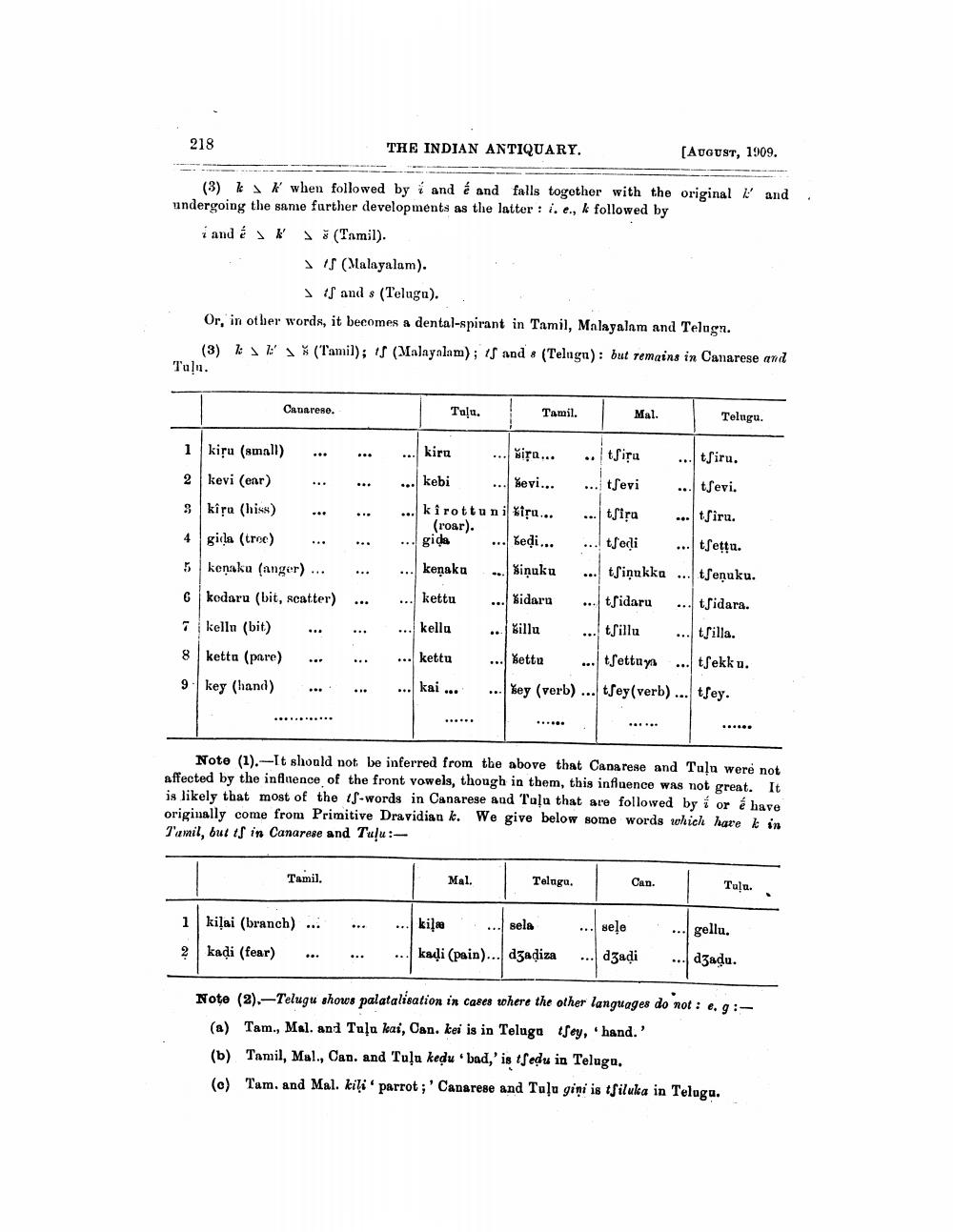________________
218
THE INDIAN ANTIQUARY.
[AUGUST, 1909.
(3) k k when followed by i and é and falls together with the original and undergoing the same further developments as the latter : i.e., k followed by i and K (Tamil).
sis (Malayalam).
and & (Teluga). Or, in other words, it becomes a dental-spirant in Tamil, Malayalam and Telugn. (3)
* (Tamil); if (Malayalam) ; 1S and & (Telugu): but remains in Canarese and Talu.
Cavarene.
To!u.
Tamil.
Mal.
Telugu.
kipu (small) 2 kevi (enr)
kîpa (hiss) gidla (troe) ... kenaku (anger)... kedaru (bit, scatter) kello (bit)
ketta (pare) ... 9. key (hand) ...
... kira ... širo... .. tsisa ... tSiru. ... kebi
Kevi... ... tsevi ... tsevi. kirottuni kipu... ... tSira ... tiru.
(roar). ...gida ... Bedi... ...todi
tsetta. kenaka Sinuku tsiņukka ... tSeņuku. kettu Midara tfidaru ... tfidara. kella Xillu ... tšillu ... tSilla. kettu Kettu ... tSettuys ... tsekku.
... Xey (verb) ... tSey(verb)... tSey.
Note (1).-It should not be inferred from the above that Cana rese and Tuļu were not affected by the influence of the front vowels, though in them, this influence was not great. It is likely that most of the 15-words in Canarese and Talu that are followed by 1 or é have originally come from Primitive Dravidian k. We give below some words which have k in Tamil, but is in Canarese and Tulu:
Tamil.
Mal.
Telagu.
Can.
Tula.
1
...
kiļai (branch) ... kadi (fear)
... kila . .. sela ... kadi (pain)... dgadiza
... sele ... dzadi
... gellu. ... dzadu.
Note (2). --Telugu shows palatalisation in cases where the other languages do not : e.9:
(a) Tam., Mal. and Toļu kai, Can. kei is in Teluga isey, 'hand.' (b) Tamil, Mal., Can. and Tuļa kedu bad,' is tSedu in Telugu. (c) Tam. and Mal. kiļi parrot ;' Canarese and Tuļu gini is tSiluka in Telugu.




